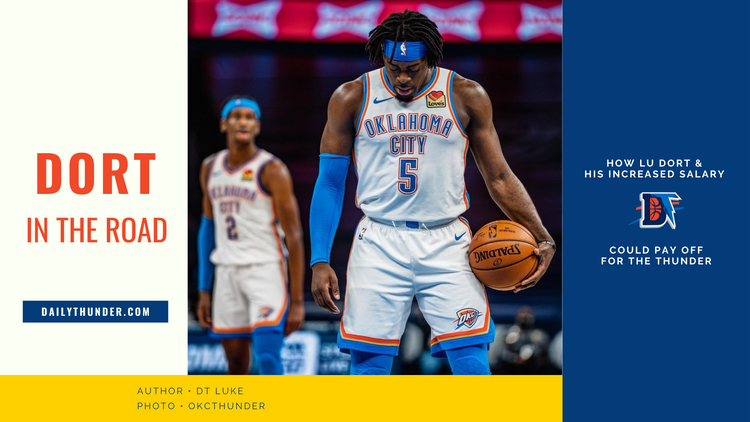Clarifying OKC’s Options with Paul George
The Thunder’s surprising trade for Paul George late Friday night stirred up several questions about Oklahoma City’s ability to retain him long-term. Below is a quick Q&A to address the most commonly asked questions.
Q: Can the Thunder use this new Designated Veteran Thingy to re-sign Paul George?
A: No. That was only available to him in Indiana.
The tool in question (Designated Veteran Player, or DVP for short) was designed to reward star players with 7 to 9 years of experience by bumping them up to the max salary of a 10+-year veteran. The player can only receive that perk from the team that drafted him, provided he hasn’t changed teams as a free agent, or if he was traded in the first four seasons of his career.
In short, requesting a trade out of Indiana cost George a few bucks. But he was undoubtedly aware of this.
Each team can have two DVP’s at a time. There is significant optimism that the Thunder will crown Russell Westbrook with one of those slots. It’ll just have to save that other DVP for Steven Adams or Alex Abrines.
(I kid. Mostly.)
Q: Can the Thunder extend George’s contract?
A: Technically, yes. In reality, no.
The Thunder doesn’t have the cap space necessary to renegotiate and extend George’s deal. That would require nearly $10 million in cap space to bring his salary to his max. Don’t expect Oklahoma City to gut pieces of the team just to do this. It wants to build a team with depth.
Without that option, George would have to opt into his 2018-19 year in order to extend his contract. That calls for him to earn $20.7 million, which is way below his market value. A hypothetical extension would be based off that amount, not automatically ratcheted up to his max salary.
It’d also require George to leave potentially tens of millions on the table. Super duper unlikely.
Q: Won’t the Thunder be able to offer a longer contract and more money next July?
A: Once again, technically yes. In reality, not so much.
Oklahoma City will be able to offer a 5-year contract starting at the max salary (currently estimated to be $30.6 million for him) with 8 percent annual raises off that base salary. Other teams can offer the same starting max salary, but only for up to four seasons with 5 percent raises.
The estimated difference between the two: five years and $177 million from his prior team (Oklahoma City in this case), or four years and $131 million from another.
It’s always possible that George locks long-term next season wherever he goes. But if he wants to potentially maximize his earnings, he’ll need to take a shorter deal so he can re-enter free agency as a 10-year veteran.
In that case, he could seek a two-year deal with a player option for a third season. That’d essentially pay him an estimated $63.6 million in Oklahoma City or $62.7 million elsewhere.
So much for that advantage.
But, those are details to stress out about at a later date. For now, just appreciate that not many teams lose a player of Kevin Durant’s caliber and bounce back this quickly.


